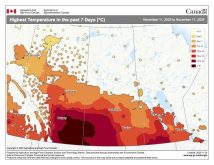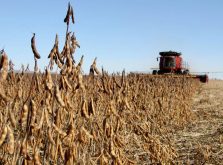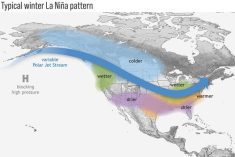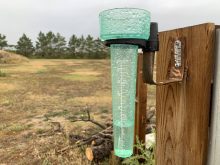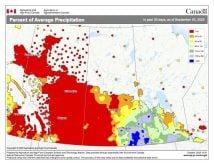It’s hard to believe we are into the last month of 2022. From a climatological point of view, we have finished the first full month of winter across the Prairies. For those who are more astronomical, we are halfway through the first full month of winter.
No matter which way you view it, November across the Prairies can run the gamut of weather from summer-like conditions to a full-on deep freeze. Unfortunately, for most places this November, winter-like conditions mostly won out, but by how much?
[RELATED] Cold, snowy start seen to Prairies’ winter
Read Also
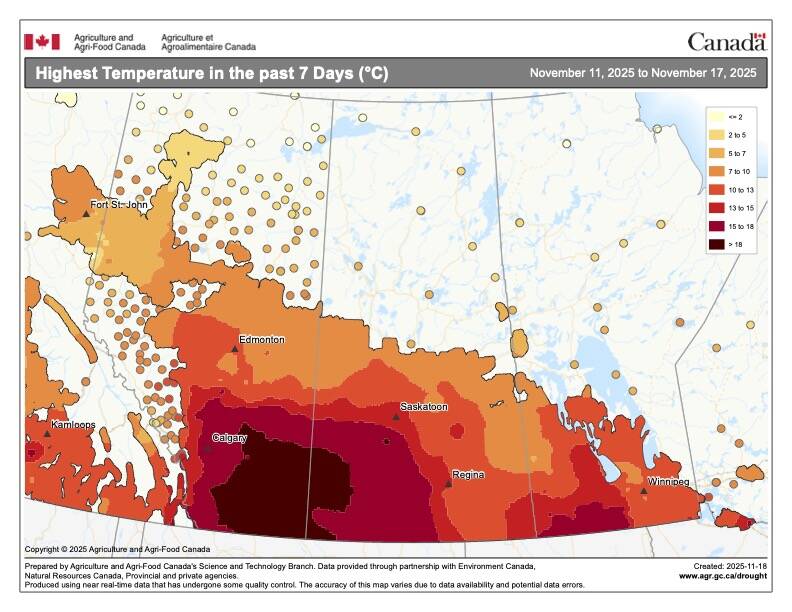
Is a weather station right for your farm?
Weather stations could make a great Christmas gift for the farmer in your life.
Before we dive into this topic, let’s take a quick look at what has been happening over the Arctic and Antarctic oceans.
Around Antarctica, the amount of November sea ice was the fourth lowest amount since accurate satellite readings began. Ice extent has been declining rapidly and was at or near record lows by the end of November.
Over the Arctic Ocean, sea ice extent for the month was the eighth lowest on record. Ice growth was below average early in November but increased rapidly by the end of the month as excess oceanic heat was released into the atmosphere.
Now to the monthly weather review and our look ahead to see what the different weather models say about the next couple of months.
After one of the warmest summers and falls on record across most of Alberta, November took a bit of a turn for the worse. After five consecutive months of well-above-average temperatures, readings across all three of the main reporting sites came in below average.
The Calgary region was coldest relative to average, with a mean monthly temperature of -5.7 C, more than 3 C below average. In the Edmonton area, the mean monthly temperature was only a little colder at -6.1 C, but thanks to its more northerly location, this reading was only around 1.0 C colder than average. Peace River was the cold spot, with a mean November temperature of -8.5 C, though this was only about 0.7 C below average.
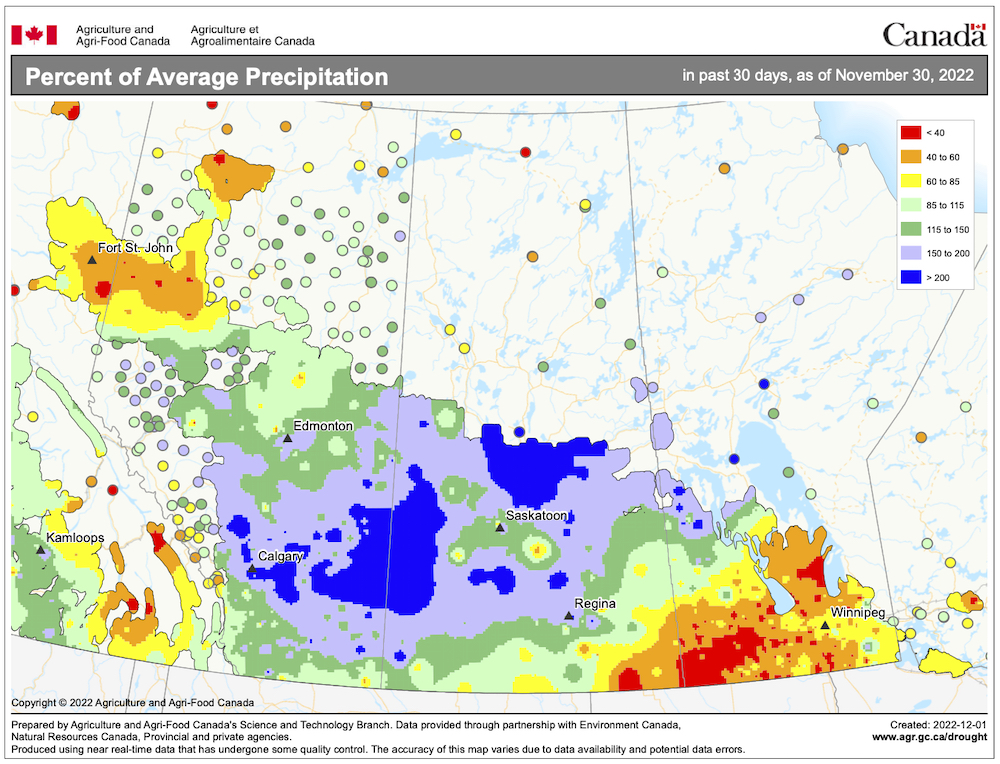
While it was a colder-than-average month across Alberta, precipitation was mostly above average. At least three major storm systems affected a large portion of the province. When all the precipitation or snow was added up, Calgary was the wettest spot, with 35.2 millimetres of melted snow, which was nearly triple its monthly average. Edmonton reported about 27 mm, which was about 10 mm above average. The Peace River region missed out on most of the big storms and received only about eight mm of water-equivalent snowfall, well below its average of 24 mm).
In Saskatchewan, the colder-than-average temperatures continued. Regina reported a mean monthly temperature of around -8 C, with Saskatoon coming in around -9 C. Both readings were around 2.5 C below their respective long-term averages. Precipitation for the month was near average in both locations.
Southern and central Manitoba missed out on the really cold weather in November. The Winnipeg region came in about 0.5 C above average, the Brandon region about 0.5 C below average, and the Dauphin region reported right around average temperatures.
Precipitation was on the light side, with both the Winnipeg and Brandon regions reporting around 10 mm of water-equivalent precipitation, which is about half of average. Dauphin saw around 20 mm, which was right around average.
Overall, the western Prairies saw colder- and wetter-than-average conditions in November. The central Prairies were colder than average with near-average precipitation, while the eastern Prairies saw near-average temperatures and below- average precipitation.
Looking at forecasts made at the end of October, overall, I would give the win to the Canadian Farmers’ Almanac as it predicted a colder-than-average month with above-average precipitation, especially over western regions.
As for the latest long-range weather models, the Old Farmer’s Almanac is calling for December to February to be colder and snowier than average. The Canadian Farmers’ Almanac is calling for near-average temperatures in December and February with below-average ones in January. It looks like all three months will see above-average precipitation, with the mention of stormy weather a couple of times each month.
Moving onto the computer models, the National Oceanic and Atmospheric Administration’s monthly forecast calls for below- average temperatures and above-average snowfall, with the greatest chance for above- average snowfall over Alberta.
A leading European weather model (ECMWF) is calling for near-average temperatures across southern regions, cooling to below average as you move northwards. Precipitation is expected to be near average over eastern regions and above average in the West.
The Climate Forecast System model is calling for a similar precipitation pattern as the European one but also forecasts below-average temperatures across all three provinces. The CanSIPS or Canadian model is calling for a continuation of November temperatures, with eastern regions near average and western regions seeing below-average temperatures. Precipitation is forecasted to be near average across all regions.
That leaves my prediction, and to tell the truth, I have no real idea. Whenever this happens, I go with my gut, and it is leaning toward colder-than-average temperatures across western regions with near-average temperatures in the east. I am also going for near- to slightly above-average snowfall across all regions, with the best chances for above average levels over western regions.
Now, as usual, it is time to sit back and watch Mother Nature make fun of all our attempts to do long-range weather forecasting.




